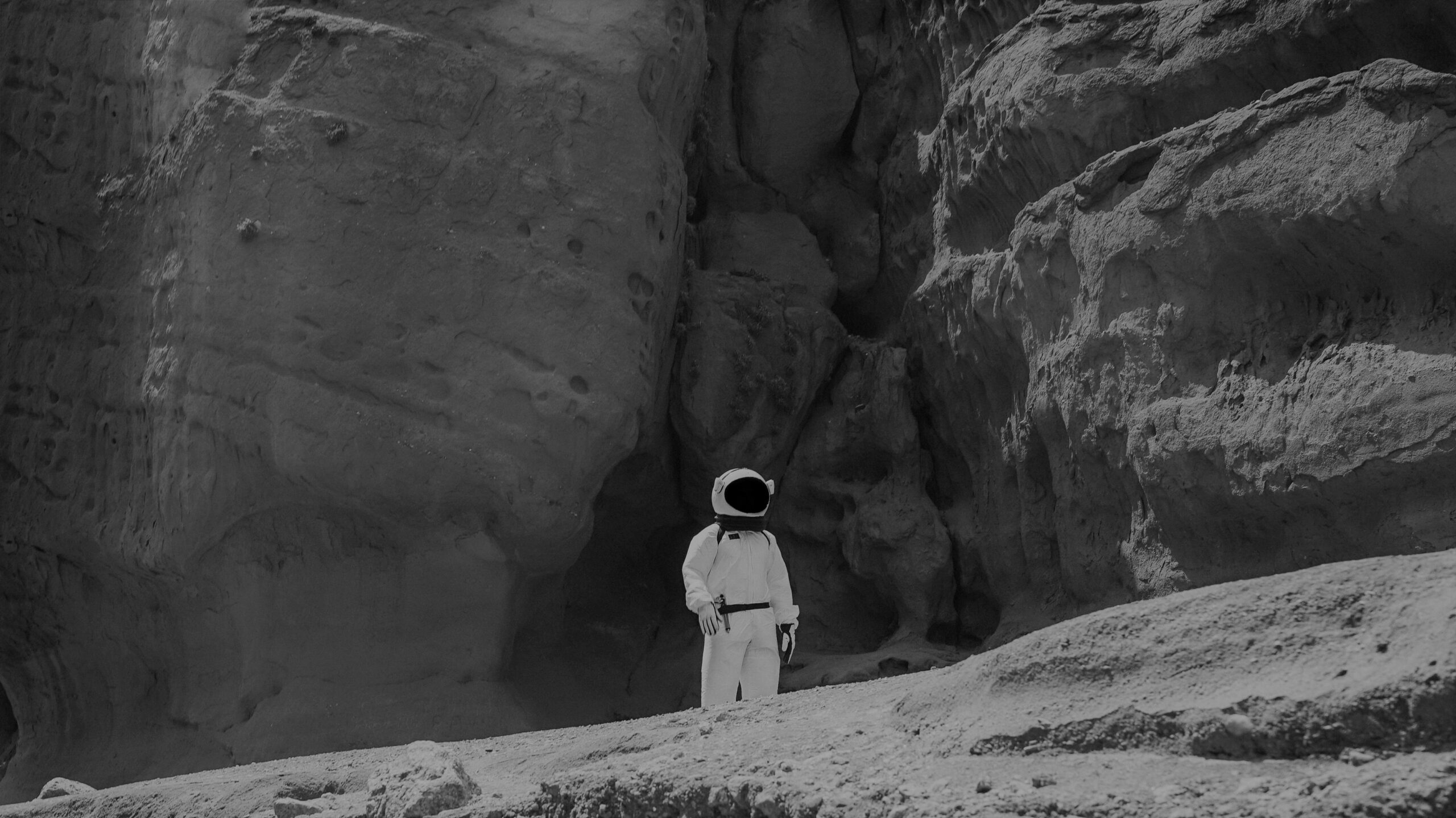@Brian McGowan/Unsplash
DE
Wer hätte es gedacht, auch Weltraumagenturen geben im Januar gerne gute Vorsätze bekannt. Und eines ist klar: 2021 wird ein spannendes Jahr für die Raumfahrt. Gleich mehrere Missionen zum Mond und zum Mars stehen dieses Jahr an. Auch wir von fortytwomagazine haben einen guten Vorsatz: euch mit spannenden Weltraum-News zu versorgen. Folgt uns auf Instagram, Facebook, Twitter und LinkedIn!
Weltweiter Wettlauf ins All
Die FAZ hat die Weltraum-Pläne von sieben Weltraumagenturen für 2021 aufgelistet. Während Indien, Japan und Russland den Mond ansteuern, haben China, die USA und die Vereinigten Arabischen Emirate den Mars im Blick. Das chinesische Raumschiff „Tianwen-1“ soll noch vor dem Sommer auf dem roten Planeten landen. Der NASA-Rover „Perseverance“ erreicht den Planeten bereits im Februar. Und auch die Raumsonde der Vereinigten Arabischen Emirate soll sich planmäßig Anfang Februar in die Umlaufbahn des roten Planeten begeben, um unter anderem das Mars-Klima weiter zu erforschen.
Europa setzt auf Erhalt statt auf Expansion
Bei der 13. Europäischen Weltraumkonferenz, die Mitte Januar stattfand, gaben auch die europäischen Weltraumakteure ihre Pläne bekannt. Mit dem Franzosen Thomas Pesquet und dem Deutschen Matthias Maurer werden 2021 gleich zwei europäische Astronauten zur ISS geschickt.
Grundsätzlich liegt der europäische Fokus eher auf dem Ausbau und der Entwicklung bestehender Programme, als auf der weiteren Eroberung des Weltalls. Die französische Tageszeitung La Croix zitiert Nathalie Huret, Direktorin des Observatoire de Physique du Globe de Clermont-Ferrand, die die europäische Weltraumforschung im Vergleich zu China und den USA als „ebenso wichtig, wenn auch weniger spektakulär“ bezeichnet.
Überraschend dunkel
Den Sternenhimmel bewundert man am besten fernab jeder Lichtverschmutzung. Doch auch in unserem Sonnensystem herrscht Lichtverschmutzung. Winzige Partikel reflektieren das Sonnenlicht, genauso wie auch die Erde und die anderen sieben Planeten. Die Raumsonde „New Horizons“ befindet sich derzeit hinter Pluto. Sie hat das innere Sonnensystem und damit auch einen Großteil der Lichtverschmutzung hinter sich gelassen. Auf der offiziellen Webseite des Hubble-Teleskops ist zu lesen, warum die neuesten Messungen von „New Horizons“ Astronomen überraschten: Das Universum sei bis zu zehnmal dunkler als bisher berechnet. Bisher gingen Wissenschaftler davon aus, dass es ungefähr zwei Billionen Galaxien gibt. Die Dunkelheit deute jedoch eher auf einige hundert Milliarden hin.
EN
Who would have thought it? Even space agencies set good intentions for the year ahead. And one thing is clear: 2021 will be an exciting year for space exploration! Several missions to the Moon and Mars are scheduled for this year. Our new year’s resolution here at fortytwomagazine is to supply you with exciting space news. Follow us on Instagram, Facebook, Twitter, and LinkedIn!
International Space Race
The Frankfurter Allgemeine Zeitung (FAZ) has compiled the 2021 plans of seven space agencies. While India, Japan, and Russia are headed to the moon, China, the USA, and the United Arab Emirates have their sights set on Mars. The Chinese spacecraft “Tianwen-1” is scheduled to land on the red planet before summer. NASA’s Perseverance rover will reach the planet as early as February. Lastly, the United Arab Emirates’ space probe is also scheduled to enter the orbit of the red planet at the beginning of February, among its goals the further investigation of the Martian climate.
Europe focuses on preservation instead of expansion
At the recent 13th European Space Conference, European space actors announced their plans as well. Two astronauts, Thomas Pesquet from France and Matthias Maurer from Germany, will be sent to the ISS in 2021. In general, the European focus lies more heavily on the expansion and development of existing programs than on the further conquest of space. The French daily newspaper La Croix quotes Nathalie Huret, director of the Observatoire de Physique du Globe de Clermont-Ferrand, who describes European space research as “just as important, if less spectacular” compared to the efforts of China and the USA.
Surprisingly dark
The starry sky is best admired far away from any light pollution. However, there is light pollution even in our solar system. Tiny particles reflect sunlight, as does the Earth as well as the other seven planets. The space probe “New Horizons” is currently traveling behind Pluto. It has left the inner solar system behind and with it much of its light pollution. The Hubble telescope’s official website explains why the latest measurements from “New Horizons” surprised astronomers: The universe is up to ten times darker than previously calculated. So far, scientists have assumed that there are about two trillion galaxies. However, the darkness rather points to some hundred billion.

@Nicolas Lobos/Unsplash
Text by Ella Steiner
Translation by Laura Emily Schulze

